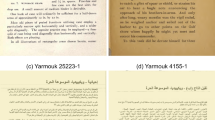Abstract
In the modern era, the necessity of digitization is increasing in a rapid manner day-to-day. The healthcare industries are working towards operating in a paperless environment. Digitizing the medical lab records help the patients in hassle-free management of their medical data. It may also prove beneficial for insurance companies for designing various medical insurance policies which can be patient-centric rather than being generalized. Optical Character Recognition (OCR) technology is demonstrated its usefulness for such cases and thus, to know the best possible solution for digitizing the medical lab records, there is a need to perform an extensive comparative study on the different OCR techniques available for this purpose. It is observed that the current research is focused mainly on the pre-processing image techniques for OCR development, however, their effects on OCR performance specially for medical report digitization yet not been studied. Herein this work, three OCR Engines viz Tesseract, EasyOCR and DocTR, and six pre-processing techniques: image binarization, brightness transformations, gamma correction, sigmoid stretching, bilateral filtering and image sharpening are surveyed in detail. In addition, an extensive comparative study of the performance of the OCR Engines while applying the different combinations of the image pre-processing techniques, and their effect on the OCR accuracy is presented.





Similar content being viewed by others
Data availability
The data that support the findings of this study are available from the corresponding author [Jitendra Tembhurne], upon reasonable request.
References
Scott PJ, Curley PJ, Williams PB, Linehan IP, Shaha SH (2016) Measuring the operational impact of digitized hospital records: a mixed methods study. BMC Med Inf Decis Mak 16(1):1–13
Suter-Crazzolara C (2018) Better patient outcomes through mining of biomedical big data. Front ICT 5:30
Tawde GY, Kundargi J (2013) An overview of feature extraction techniques in OCR for Indian scripts focused on offline handwriting. Int J Eng Res Appl 3(1):919–926
Hamad K, Kaya M (2016) A detailed analysis of optical character recognition technology. Int J Appl Math Electron Comput 4:244–249
Karthick K, Ravindrakumar KB, Francis R, Ilankannan S (2019) Steps involved in text recognition and recent research in OCR; a study. Int J Recent Technol Eng 8(1):2277–3878
Shen M, Lei H (2015) Improving OCR performance with background image elimination. In: 2015 12th International conference on fuzzy systems and knowledge discovery (FSKD). IEEE, pp 1566–1570
Jain P, Taneja K, Taneja H (2021) Which OCR toolset is good and why: a comparative study. Kuwait J Sci 48(2)
de Mello CA, Lins RD (1999) A comparative study on OCR tools. In: Vision interface, vol 99, pp 224–231
Smith R (2007) An overview of the Tesseract OCR engine. In: Ninth international conference on document analysis and recognition (ICDAR 2007), vol 2. IEEE, pp 629–633
Vithlani P, Kumbharana CK (2015) Comparative study of character recognition tools. Int J Comput Appl 118(9):31–36
Shafii M, Sid-Ahmed M (2015) Skew detection and correction based on an axes-parallel bounding box. Int J Doc Anal Recogn (IJDAR) 18(1):59–71
Lin K, Li TH, Liu S, Li G (2019) Real photographs denoising with noise domain adaptation and attentive generative adversarial network. In: Proceedings of the IEEE/CVF conference on computer vision and pattern recognition workshops
List of Top 5 Open Source OCR Tools (2020). https://www.hitechnectar.com/blogs/open-source-ocr-tools/. Accessed on 17th Oct 2022
Gupta B (2018). Improve accuracy of OCR using image preprocessing. https://medium.com/cashify-engineering/improve-accuracy-of-ocr-using-image-preprocessing-8df29ec3a033. Accessed on 17th Oct 2022
Improving the quality of the output (2021). https://tesseract-ocr.github.io/tessdoc/ImproveQuality.html. Accessed on 25th Oct 2022
Why is it important to digitize medical records? (2019). https://www.managedoutsource.com/blog/why-is-it-important-to-digitize-medical-records/. Accessed on 25th Oct 2022
Optical character recognition—OCR text recognition (2021). https://www.v7labs.com/blog/ocr-guide. Accessed on 30th Oct 2022
Devopedia (2019). Levenshtein distance. https://devopedia.org/levenshtein-distance. Accessed on 30th Oct 2022
EasyOCR (2021). https://www.jaided.ai/easyocr/. Accessed on 30th Oct 2022
Kannan P, Deepa S, Ramakrishnan R (2010) Contrast enhancement of sports images using modified sigmoid mapping function. In: 2010 International conference on communication control and computing technologies. IEEE, pp 651–656
Juneja K, Rana C (2020) Alignment and disruption robust binary mapper for optical Braille recognition. Int J Inf Technol 12(4):1291–1298
Joseph FJJ (2020) Effect of supervised learning methodologies in offline handwritten Thai character recognition. Int J Inf Technol 12(1):57–64
Rani U, Kaur A, Josan G (2019) A new binarization method for degraded document images. Int J Inf Technol 9(1):1–19
Sahare P, Tembhurne JV, Parate MR, Diwan T, Dhok SB (2023) Script independent text segmentation of document images using graph network based shortest path scheme. Int J Inf Technol 15(4):2247–2261
Lertsawatwicha P, Phathong P, Tantasanee N, Sarawutthinun K, Siriborvornratanakul T (2023) A novel stock counting system for detecting lot numbers using Tesseract OCR. Int J Inf Technol 15(1):393–398
Funding
No funding was received for conducting this study.
Author information
Authors and Affiliations
Corresponding author
Ethics declarations
Conflict of interest
The authors have no competing interests to declare that are relevant to the content of this article.
Rights and permissions
Springer Nature or its licensor (e.g. a society or other partner) holds exclusive rights to this article under a publishing agreement with the author(s) or other rightsholder(s); author self-archiving of the accepted manuscript version of this article is solely governed by the terms of such publishing agreement and applicable law.
About this article
Cite this article
Batra, P., Phalnikar, N., Kurmi, D. et al. OCR-MRD: performance analysis of different optical character recognition engines for medical report digitization. Int. j. inf. tecnol. 16, 447–455 (2024). https://doi.org/10.1007/s41870-023-01610-2
Received:
Accepted:
Published:
Issue Date:
DOI: https://doi.org/10.1007/s41870-023-01610-2




